 Suzuki Grand Vitara: Engine Coolant
Suzuki Grand Vitara: Engine Coolant
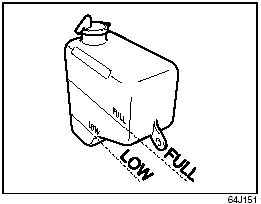
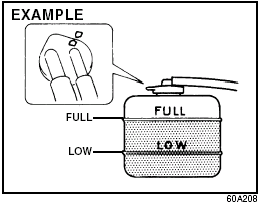
Selection of Coolant
To maintain optimum performance and durability of your engine, use SUZUKI Genuine
Coolant or equivalent. This type of coolant is best for your cooling system as it:
• Helps maintain proper engine temperature.
• Gives proper protection against freezing and boiling.
• Gives proper protection against corrosion and rust. Failure to use the proper
coolant can damage your cooling system. Your authorized SUZUKI dealer can help you
select the proper coolant.
CAUTION: To avoid damaging your cooling system:
• Always use a high quality ethylene glycol base phosphate type coolant diluted
with distilled water at the correct mixture concentration.
• Make sure that the proper mix is 50/ 50 coolant to distilled water and in no case
higher than 70/30. Concentrations greater than 70/30 coolant to distilled water
will cause overheating conditions.
• Do not use straight coolant nor plain water.
• Do not add extra inhibitors or additives. They may not be compatible with your
cooling system.
• Do not mix different types of base coolants. Doing so may result in accelerated
seal wear and/or the possibility of severe overheating and extensive engine/automatic
transmission damage.
Engine Coolant Level Check
Check the engine coolant level at the reserve tank, not at the radiator. With the engine cool, the engine coolant level should be between the “FULL” and “LOW” marks.
Adding Engine Coolant
If the engine coolant level is below the “LOW” mark, more engine coolant should be added. Remove the reserve tank cap and add engine coolant until the reserve tank level reaches the “FULL” mark. Never fill the reserve tank above the “FULL” mark.
CAUTION:
• The mixture you use should contain 50% concentration of antifreeze.
• If the lowest ambient temperature in your area is expected to be –35 °C (–31°F)
or below, use higher concentrations up to 60% following the instructions on the
antifreeze container.
• When putting the cap on the reserve tank, line up the arrow on the cap and the
arrow on the tank. Failure to follow this can result in coolant leakage.
 WARNING: Engine coolant is harmful
or fatal if swallowed or inhaled. Do not drink antifreeze or coolant solution. If
swallowed, do not induce vomiting. Immediately contact a poison control center or
a physician. Avoid inhaling mist or hot vapors; if inhaled, remove to fresh air.
If coolant gets in eyes, flush eyes with water and seek medical attention. Wash
thoroughly after handling. Solution can be poisonous to animals. Keep out of the
reach of children and animals.
WARNING: Engine coolant is harmful
or fatal if swallowed or inhaled. Do not drink antifreeze or coolant solution. If
swallowed, do not induce vomiting. Immediately contact a poison control center or
a physician. Avoid inhaling mist or hot vapors; if inhaled, remove to fresh air.
If coolant gets in eyes, flush eyes with water and seek medical attention. Wash
thoroughly after handling. Solution can be poisonous to animals. Keep out of the
reach of children and animals.
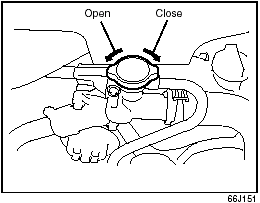
Engine Coolant
Replacement
1) When the engine is cool, remove the radiator cap by turning it slowly to the left until a “stop” is felt. Do not press down while turning the cap. Wait until any pressure is released, then press down on the cap and continue turning it to the left.
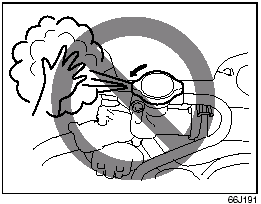
 WARNING: It is hazardous to remove
the radiator cap when the engine coolant temperature is high, because scalding fluid
and steam may be blown out under pressure. Wait until the engine coolant temperature
has lowered before removing the cap.
WARNING: It is hazardous to remove
the radiator cap when the engine coolant temperature is high, because scalding fluid
and steam may be blown out under pressure. Wait until the engine coolant temperature
has lowered before removing the cap.
2) Remove the reservoir by lifting it up, and drain the reservoir completely.
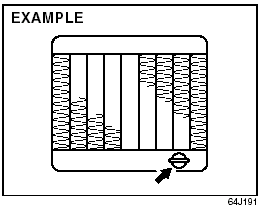
3) Loosen the drain plug attached to the lower part of the radiator and drain the engine coolant into a suitable container. 4) Reinstall the reservoir and fill it with engine coolant to the “FULL” line. 5) Tighten the drain plug on the radiator, fill the radiator with engine coolant and install the radiator cap. 6) After filling, let the engine idle for about 2 – 3 minutes to get rid of air in the cooling system. Then, stop the engine. 7) Check the engine coolant level in the radiator again. If the level has gone down, add more engine coolant.
CAUTION: The engine coolant must be replaced with the vehicle on level ground.
 Automatic Transmission Fluid
Automatic Transmission Fluid
Specified Fluid
Use an automatic transmission fluid SUZUKI ATF 3317 or Mobil ATF 3309.
Fluid Level Check
CAUTION: Driving with too much or too little fluid can damage the transmission.
You must ch ...
 Windshield Washer Fluid
Windshield Washer Fluid
Front and rear
(if equipped)
Check that there is washer fluid in the tank by looking at the washer fluid level
gauge which is attached to the cap of the washer fluid tank. If the fluid level
...
See also:
Sun shade
Sun shade
The sun shade can be slid forward or
backward by hand while the moonroof is
closed.
If the moonroof is opened, the sun shade
also moves back. ...
Materials used in the cabin
The materials used in the cabin have been
developed to help minimize the amount of dust
and make the cabin easier to keep clean. All
floor mats can be easily removed for cleaning.
Use car clean ...
Introduction
System overview
1 Cell phone
2 Location of the microphone
3 Steering wheel keypad
4 Center console control panel and display ...
